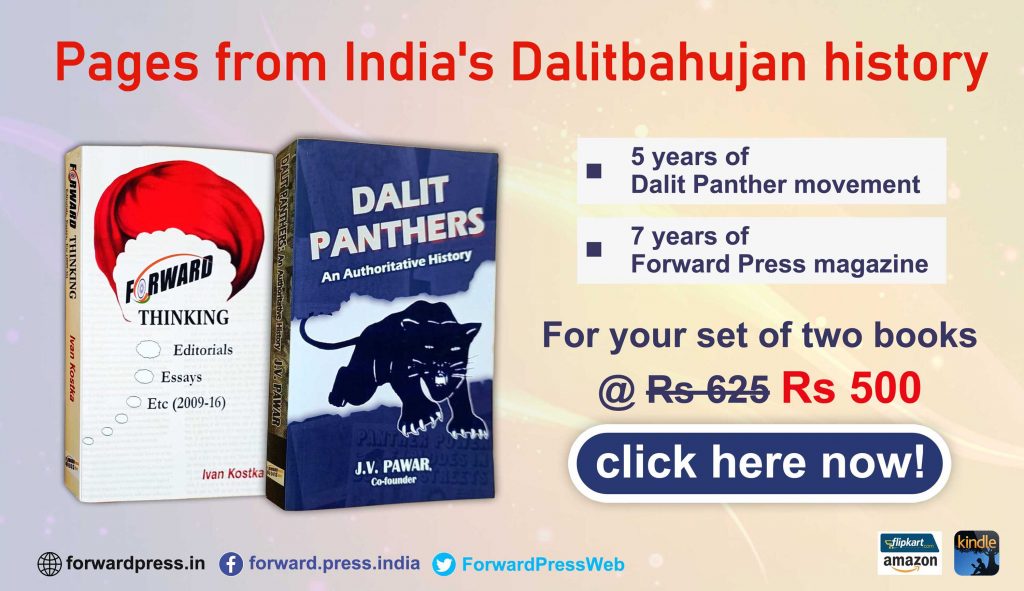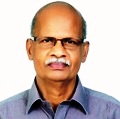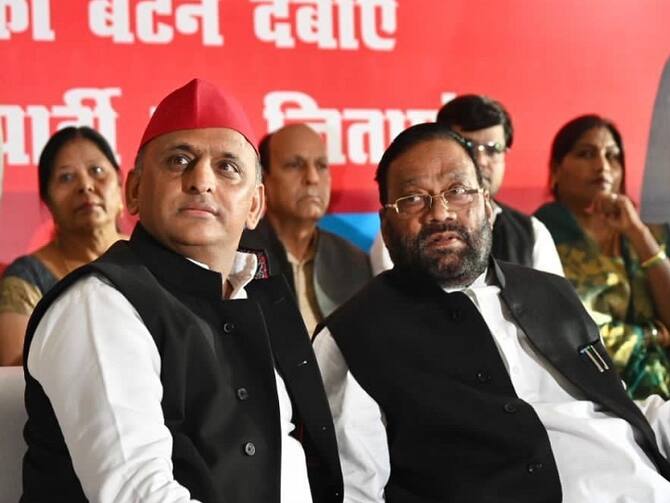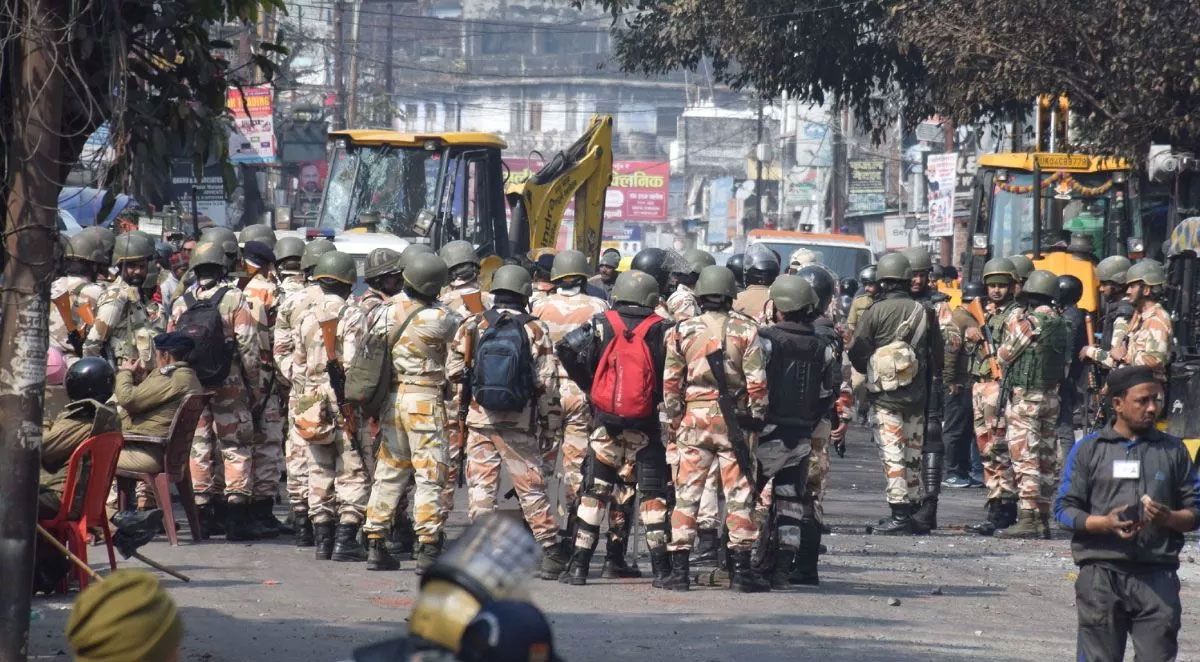On 26 February 2021, the Supreme Court issued a notice to the central government on a petition seeking caste-based census in the country. The petition said that such a census would address the lack of data needed to provide adequate reservations in jobs and admissions to the Other Backward Classes (OBC) or the Socially and Educationally Backward Classes (SEBC). The proforma for the 2021 census has been announced, the petition said, adding it has 32 columns with headers Scheduled Castes, Scheduled Tribes, Hindu, Muslim, Christian, etc but has no mention of the OBCs. It sought urgent court intervention to introduce such a proforma for the 2021 census that has a column for the OBCs. Inadequate representation in government jobs and educational institutions, the petition said, was a violation of the fundamental rights of these classes under Articles 14, 15(4), 16 (4) and 46 of the Constitution. The petition filed by Telangana-based social activist G. Mallesh Yadav also informed the court that R. Krishnaiah, president of National Backward Classes Welfare Association, had written to the government seeking a caste-wise census but failed to elicit a response. Having heard the petition, the Supreme Court bench led by Chief Justice S.A. Bobde sought responses from the Ministry of Social Justice and Empowerment and the National Commission for Backward Classes (NCBC).[i]
Views on census enumeration of SEBCs
a) Mandal Commission: Computation of OBC population
B.P. Mandal, chairperson of the second Backward Classes Commission, popularly known as the Mandal Commission, had persuaded the then home minister Giani Zail Singh to commission a census enumeration of Socially and Educationally Backward Classes (SEBC). However, the lobby of entrenched upper-caste interests – fearing that the manipulations they indulge in the absence of such data will get exposed – succeeded in killing the initiative. Hence, the Mandal Commission decided to use the figures of 1931 census, supplemented by other data, and assumptions to arrive at the figure of 52 per cent for the proportion of OBCs but recommended 27 per cent job reservations for them. The commission report said, “the population of the OBCs, both Hindu and non-Hindu, is around 52% of the total population of India. Accordingly, 52% of all posts under the Central Government should be reserved for them. But this provision may go against the law laid down in a number of Supreme Court judgements wherein it has been held that the total quantum of reservation under Articles 15(4) and 16(4) of the Constitution should be below 50%. In view of this, the proposed reservation for OBCs would have to be pegged at a figure which when added to 22.5% for SCs and STs, remains below 50%. In view of this legal constraint, the Commission is obliged to recommend a reservation of 27% only, even though their population is almost twice this figure.”[ii]
b) Announcement on the eve of the millennium census in 2001
The issue of caste-based enumeration of Indian population seriously came up for discussion on the eve of the 2001 census. The idea was floated sometime in 1998. Around this time three seminars sponsored by the Government of India were held at Aligarh Muslim University (December 1998), JNU (March 1999), and Mysore University (July 2001 – in association with Madras Institute of Development Studies, Chennai; and Institute of Social and Economic Change and National Institute of Advanced Studies, Bengaluru). Domination of brahmanical forces and notional presence of SC, ST, and OBC professionals in the seminars led to advance legitimization of the rejection of the proposed caste-based enumeration in 2001 on the following grounds: (i) Technical – based on localization, fragmentation, fluidity and ambiguity of identities, and the sheer magnitude of numbers; (ii) Pragmatic – caste-based enumeration may result in planned and organized efforts to unduly influence the caste status; and (iii). Moral – caste is an unjust anachronism/chronological error. Accepting the above and similar arguments, the Registrar General announced that caste would not be enumerated in the 2001 Census. Scholars H.S. Verma and A.K. Singh observed: “The upper castes had taken it to mean a serious threat not only to their exclusivity of power but more importantly, also to their mechanism of reproducing exclusivity and exclusion.”[iii]
c) What do academics and activists say?
In a pioneering article, Ambrose Pinto argued that caste should be included as an essential element of the Census 2001.[iv] The Sociology unit of the Institute of Economic Growth, Delhi, organized a symposium on 17 July 1998 to debate the issue. An overview of the issues discussed by Satish Deshpande and Nandini Sundar[v] brought out the following views on caste enumeration (for, against and the practical difficulties involved):
(i) Arguments for including caste in census
- Caste is a very important variable in contemporary Indian society, hence there are social and scientific reasons why data on it are valuable for their own sake.
- Caste data will help track long-term shifts in the morphology of the system and of individual castes.
- Recent legislations mandating various types of reservation for the OBCs make caste data essential (for drawing up fresh lists of OBCs, admission/deletion of OBCs, identification/revision of creamy-layer criteria, fixing quotas within quotas, etc).
[These arguments have become more relevant given today’s context: a Constitutionally empowered National Commission for Backward Classes, a commission led by Justice (retd) G. Rohini looking into subcategorization of OBCs, and the reservation for the economically weaker sections (EWS) that has recently come to effect.]
(ii) Arguments against including caste in census
- It will intensify divisive caste identities, conflict and violence.
- Quality of data generated may be questionable.
- The involvement of the State in the whole exercise is not advisable, since, many a time, caste data has been compromised by partisan politics. A “people’s census”, where communities would gather data on themselves, would be an alternative.
(iii) Practical difficulties in caste enumeration
- Sheer variety of caste names and problems of aggregation, state-wise and at the national level. Around 86 per cent of caste groups can claim only local (state-level) presence.
- Since tabulation of the huge caste data may take years, its availability/utility for research and action before it becomes obsolete/outdated is doubtful.
- Possible Constitutional-legal problems in enumeration cannot be ruled out. For example, Article 15.1 of the Constitution prohibiting the State from discriminating against citizens based on “religion, race, caste, sex, place of birth or any of them” may be invoked. This was not possible during the 1931 Census since it was managed by the colonial British administration.
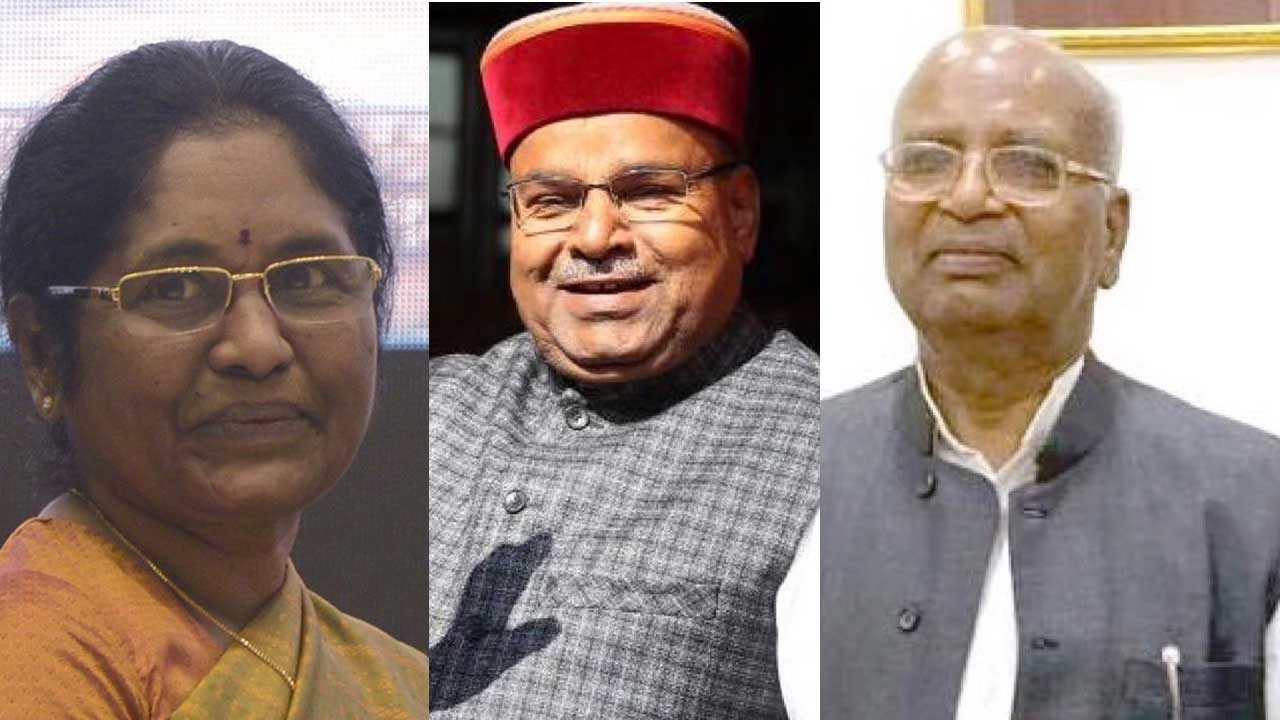
According to psephologist and politician Yogendra Yadav, “Arguably, the deepest anxiety of the caste order is that such an enumeration might unmask the nature of caste privileges. Once you count SCs, STs and OBCs, you automatically get information on the residual category, the upper-caste. Since the Census also collects information on religion, it should not be difficult to generate fine-grained data about the social, educational, and economic privileges of the upper-caste Hindus. This category counts for less than 20 per cent of our population but occupies broadly 80 per cent of all positions of power and privilege. It hides under the umbrella category of General. It has good reasons to fear the naming and counting of its privileges. After all, the ultimate caste privilege is to remain ‘caste-less’ – to make its own caste privileges invisible. This is what the ruling caste does when it rules.”[vi]
In an earlier article on caste census, the present author wrote about developing a structured national/master table of caste names, using “blockchain” technology and approaching households with a pre-decided list of castes.[vii]
d) SECC: a costly, fruitless, and fraudulent exercise
The Socio-Economic Caste Census (SECC) was conducted between 2011 and 2013 as part of the Ministry of Rural Development’s survey of socio-economic status of households, for which nearly Rs 4,900 crore was spent. In 2015, an expert committee was set up under the then vice-chairman of NITI Aayog, Arvind Panagariya, to decide on the classification of the SECC data. All data from SECC, barring caste numbers, was put in the public domain in 2016. In July 2017, the government told Parliament that the raw caste data from SECC had been given to the Ministry of Social Justice & Empowerment, which was to form an expert group for classification of data. One problem with the SECC data, cited by the experts, was that it had thrown up 46 lakh caste, sub-caste, clan names and so on, rendering their categorization a herculean task. The caste part of the SECC remains sealed.
e) Commission for subcategorization of OBCs (2017)
The commission that was set up to examine the sub-categorization of Other Backward Classes is yet to submit its final report. It has based its draft recommendations on the population figures from the 1931 Census, and not on the more recent Socio-Economic Caste Census (SECC) 2011. It is reported that a hurdle for the Commission has been the absence of data for the population of various communities for comparison with their representation in jobs and admissions.[viii]
f) Empowered NCBC (2018)
NCBC has also sought caste census for OBCs, as the deadline – which has been revised a few times – approaches for the Justice Rohini Commission to submit its data on subcategorization of OBCs. On 1 April 2021, NCBC had sent a letter to the Ministry of Social Justice and Empowerment, recommending enumeration of OBCs as part of the Census 2021, to ensure effective distribution of welfare measures.[ix]
g) Government’s ‘U turn’
After decades of demand for caste count in the decennial census, the central government had announced its decision in August 2018 to collect OBC data in the Census 2021 much to the relief among the OBC fraternity in the country.[x] However, the following year, The Hindu quoted a senior government official saying that the Census 2021 may skip caste count.[xi]
Other pertinent views worth noting
According to Nandini Sundar, the positivist or objectivist camp sees classification or categories as corresponding to some objective reality or concept. But the prescriptive or constructionist school sees classification as based on symbolic conventions or social constructions. According to one major position on categorization by caste, census classification merely reflects social classifications, and, since caste has an objective reality, definitions of it for the purpose of the census can more or less capture this reality. According to M. Vijayanunni, former Registrar General and Census Commissioner, the basic model of census is one of a mirror to society.[xii] On the other hand, there are social scientists who argue that census classification does not mirror social classification, they actively produce those classifications and ways of thinking.
Census data, it is argued, would be useful in drawing up fresh list of OBCs, for admitting new castes into the list and graduating others out. It might enable proportional representation for disadvantaged castes within the reservation quota. Anthropologist Susan Bayly writes, “Graduation out of a beneficiary list, however, is politically very difficult and almost no state government has been successful in practice. The losers in this process tend to be the smaller castes without much political clout.”[xiii] Supporters of caste enumeration also claim that it would be useful in planning, like locating schools, primary health centres (PHCs), etc. Nandini Sundar writes that “a refusal to count caste in the name of national unity, supporters argue, is simply a mask for maintaining upper caste hegemony”.[xiv]
According to Ashwini Deshpande and Rajesh Ramachandran, “While there is a large and growing body of work documenting the changes in the standard of living indicators of the SCs and STs, as well as the economic discrimination faced by these groups, the discussion about the material conditions or the economic dominance of the group of castes and communities classified as the ‘Other Backward Classes’ (OBCs) in India is prompted more by beliefs, or localized case studies, rather than by an empirical analysis of the macro evidence. Part of the reason for this lacuna is the lack of hard data … This would be the only instance of an affirmative action programme in the world, where the targeted beneficiaries are not counted as a separate category in the country’s census.”[xv] Deshpande and Ramachandran summarized their study as follows: “In a three-fold division of the population between SC, STs, OBCs and Others, we see clear disparities in virtually all indicators of material wellbeing– marginal per capita consumption expenditure (MPCE), years of education, wages, occupational categories – with Others at the top, SC-STs at the bottom and OBCs in between, and indicates that there is no absolute reversal of traditional caste hierarchies.”[xvi]
Regarding the period of operation of its recommendations, Mandal Commission wanted that the entire programme to be reviewed after 20 years of its implementation. Reservation in public employment was introduced in 1993 and the programme was applied in admission to higher educational institutions in 2008. Though a commission for subcategorization of OBCs was appointed in October 2017 (to study the gaps in benefits accruing from reservation among them, classify them and propose formula for equitable distribution), and the NCBC has been granted Constitutional status in August 2018 (to investigate justice/empowerment matters beyond issues in inclusion/exclusion of OBCs), the review process recommended by the Mandal Commission is still pending. Though the need to continue OBC reservation is beyond doubt, the new list of eligible classes, reservation percentage revision and developmental programmes cannot be identified/effected/planned unless the caste-wise socio-economic-educational data is scientifically collected through a population census. According to P.S. Krishnan, former secretary to the Government of India, who had played an important role in the Mandal Commission, most of the arguments against caste-based census are fallacious and do not stand up to rational scrutiny.
It may be noted that the issue of subcategorization is not limited to OBCs alone. In September 2020, a Constitution Bench of the Supreme Court reopened the legal debate on subcategorization of Scheduled Castes and Scheduled Tribes for reservations, which would also necessitate a caste census. The need for ascertaining “creamy-layer” communities, not only among the OBCs but also from SCs and STs, is gaining increasing acceptance in the commissions created to deliver social justice to the historically oppressed classes in the interest of equitable distribution of the benefits of reservation and welfare measures. Identification of beneficiaries for the above purposes calls for caste data, the absence of which makes a mockery of the mandate of the constitutionally empowered commissions for the historically oppressed classes, particularly the NCBC. In fact, the work of NCBC have come to a grinding halt for want of caste data, and the report being prepared by the Rohini commission is also likely to be inconclusive for the same reason. In the absence of real data, OBCs are being denied social justice – proportional representation in services and admission to educational institutions, and equitable intra-OBC distribution of quota (quota within the quota) – while the upper castes enjoy disproportionate representation under the guise of the General category and now the EWS quota.
[i] Rautray, Samanwaya. (2021). ‘SC issues notice on plea seeking caste-based census required to provide adequate OBC reservations’. The Economic Times. Accessed from https://economictimes.indiatimes.com/news/politics-and-nation/sc-agrees-to-hear-plea-for-caste-wise-2021-census-for-backward-classes/articleshow/81230651.cms?from=mdr on 3 April 2021
[ii] Government of India. (1980). Report of the Backward Classes Commission, Vols I and II, p 58.
[iii] H.S. Verma (ed).(2005). The OBCs and the Ruling Classes in India. New Delhi: Rawat Publications.
[iv] Pinto, Ambrose.(1998). ‘Should caste be included in the Census?’. Economic & Political Weekly, Vol 33, No 31.
[v] Deshpande, Satish and Nandini Sundar.(1998). Economic & Political Weekly, Vol 33, No 32.
[vi] Yadav, Yogendra.(2021). ‘Why no govt wants OBC count in Census’. Accessed from https://www.tribuneindia.com/news/comment/why-no-govt-wants-obc-count-in-census-236049)
[vii] P.N. Sankaran. (2019). ‘Don’t shy away from Caste Census 2021 – there is technology’. Forward Press. Accessed from https://www.forwardpress.in/2019/08/dont-shy-away-from-caste-census-2012-there-is-technology/
[viii] Nair, Shalini. Commission on OBC sub-categorisation: Recommendations on quota within quota based on 1931 census, The Indian Express. Accessed from https://indianexpress.com/article/india/commission-on-obc-sub-categorisation-recommendations-on-quota-within-quota-based-on-1931-census-5720157/
[ix] Dasgupta, Sravasti.(2021). ‘Backward classes panel bats for OBC census, says data will ensure welfare measures reach all’. ThePrint. Accessed from https://theprint.in/india/backward-classes-panel-bats-for-obc-census-says-data-will-ensure-welfare-measures-reach-all/633123/
[x] Jain, Bharti. ‘OBC data to be collected as part of Census in 2021’. The Times of India. Accessed from https://timesofindia.indiatimes.com/india/obc-data-to-be-collected-as-part-of-census-in-2021/articleshow/65630089.cms
[xi] The Hindu, 3 August 2019
[xii] ‘Caste can’t be cast off’, The Indian Express, 19 November 1999
[xiii] Bayly, Susan.(1999). Caste, Society and Politics in India from the Eighteenth Century to the Modern Age. Cambridge: Cambridge University Press
[xiv] Sundar, Nandini.(2000). ‘Caste as Census Category: Implications for Sociology’. Current Sociology, 48 (3): 111-126.
[xv] Deshpande, Ashwini and Rajesh Ramachandran.(2014). ‘How Backward are the Other Backward Classes? Changing Contours of Caste Disadvantage in India’. Working Paper No. 233, Centre for Development Economics, Delhi School of Economics.
`[xvi] Ibid
Copy-editing: Anil
